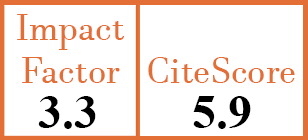Full Papers
The application value of peripheral plasmablasts in the assessment of disease activity and treatment response in systemic lupus erythematosus.
L. Wan1, J. Guo2, A. Sun3, H. Chen4, B. Hu5, C. Liu6
- Department of Transfusion Medicine, Wuhan Hospital of Traditional Chinese and Western Medicine, Tongji Medical College, Huazhong University of Science and Technology, Wuhan, China.
- Department of Paediatrics, Xiangyang Central Hospital, Affiliated Hospital of Hubei University of Arts and Science,Clinical Research Center for Paediatric Diseases and Rare Diseases, Xiangyang, China.
- Department of Transfusion Medicine, Wuhan Hospital of Traditional Chinese and Western Medicine, Tongji Medical College, Huazhong University of Science and Technology, Wuhan, China.
- Department of Transfusion Medicine, Wuhan Hospital of Traditional Chinese and Western Medicine, Tongji Medical College, Huazhong University of Science and Technology, Wuhan, China.
- Department of Transfusion Medicine, Wuhan Hospital of Traditional Chinese and Western Medicine, Tongji Medical College, Huazhong University of Science and Technology, Wuhan, China. 2651257383@qq.com
- Department of Transfusion Medicine, Wuhan Hospital of Traditional Chinese and Western Medicine, Tongji Medical College, Huazhong University of Science and Technology, Wuhan, China. liuchengyu0418@foxmail.com
CER18935
Full Papers
PMID: 41105447 [PubMed]
Received: 21/05/2025
Accepted : 10/09/2025
In Press: 13/10/2025
Abstract
OBJECTIVES:
This study aims to investigate the significance of peripheral plasmablasts as biomarkers for assessing disease activity and predicting treatment response in systemic lupus erythematosus (SLE).
METHODS:
A retrospective analysis was conducted on 108 SLE patients hospitalised at Wuhan Hospital of Traditional Chinese and Western Medicine from September 2023 to December 2024, focusing on their peripheral blood B cell subsets.
RESULTS:
Based on the Systemic Lupus Erythematosus Disease Activity Index 2000 (SLEDAI-2K) scores, SLE patients were categorised into mild (69 cases), moderate (27 cases), and severe (12 cases) groups. Plasmablast proportions differed significantly among SLE disease activity (mild vs. moderate: 4.06%±2.43% vs. 10.91%±6.03%, p<0.001; mild vs. severe: 4.06%±2.43% vs. 14.68%±6.41%, p<0.001; moderate vs. severe: 10.91%±6.03% vs. 14.68%±6.41%, p=0.080). Plasmablast proportions positively correlated with SLEDAI-2K, anti-dsDNA antibodies, and erythrocyte sedimentation rate, and negatively correlated with C3, C4, white blood cell and platelet counts. The AUC value for predicting SLE disease activity using plasmablast proportions was 0.885. With a cut-off value of 6.06%, the sensitivity and specificity were 87.2% and 85.5%, respectively. Moreover, in 17 patients undergoing dynamic B-cell subset monitoring, those achieving remission after treatment, whether newly diagnosed or relapsed, showed decreasing plasmablast proportions and counts over time. In contrast, refractory patients displayed poor response and persistently high plasmablast proportions and counts despite treatment.
CONCLUSIONS:
Peripheral plasmablasts is intricately linked with the disease activity in SLE; sustained elevated levels of plasmablasts may serve as a prognostic indicator of suboptimal therapeutic response.



